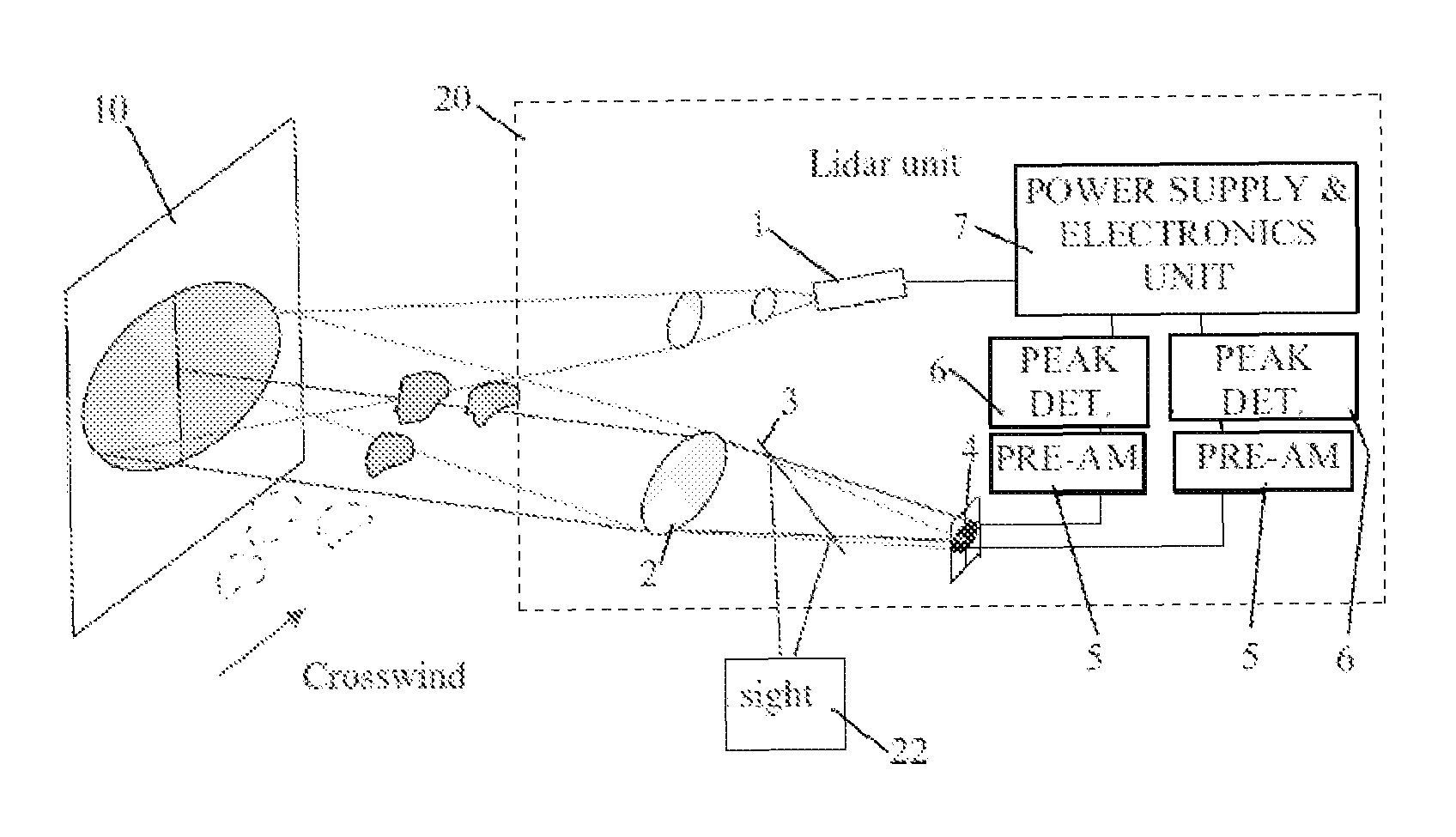Fire control system using a LIDAR (laser identification, detection and ranging) unit
a technology of lidar and fire control system, applied in the direction of weapons, reradiation, instruments, etc., can solve the problems of system performance becoming unpredictable, system is sensitive to non-uniformities, and system limitations based on this techniqu
- Summary
- Abstract
- Description
- Claims
- Application Information
AI Technical Summary
Benefits of technology
Problems solved by technology
Method used
Image
Examples
Embodiment Construction
[0011]Reference is now made to FIG. 1, which illustrates a Fire Control System (FCS), constructed and operative in accordance with an embodiment of the present invention.
[0012]The FCS may comprise a LIDAR (laser identification, detecting and ranging) unit 20 and a night-and-day sight unit 22.
[0013]The LIDAR 20 may comprise an eye safe laser 1 (e.g., λ=1.54 μm), which may transmit short pulses at a 1 kHz rep-rate, and which may include transmitter optics for beam collimating (for example, with a divergence of 300 μRad) a beam which is transmitted to a target 10. (The invention is not limited to these exemplary values.) A collecting lens 2 may be provided with a wide bandpass, which is adapted to receive beams returning from the target 10. The collecting lens 2 may be correlated to the night-and-day sight unit 22 as well as to the wavelength of the laser. A dichroic beam splitter 3 with a narrow band pass (which may be adapted to the wavelength of the laser) may send the beam to the n...
PUM
 Login to View More
Login to View More Abstract
Description
Claims
Application Information
 Login to View More
Login to View More - R&D
- Intellectual Property
- Life Sciences
- Materials
- Tech Scout
- Unparalleled Data Quality
- Higher Quality Content
- 60% Fewer Hallucinations
Browse by: Latest US Patents, China's latest patents, Technical Efficacy Thesaurus, Application Domain, Technology Topic, Popular Technical Reports.
© 2025 PatSnap. All rights reserved.Legal|Privacy policy|Modern Slavery Act Transparency Statement|Sitemap|About US| Contact US: help@patsnap.com


